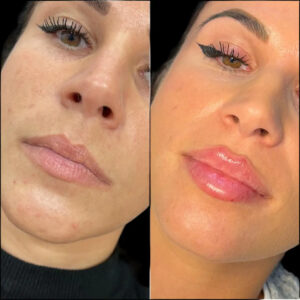(Dr. Kumar Vishal Agrawal expert orthopedics & traumatology Dept. of Orthopaedics & Trauma Care Medifirst Hospital, Ranchi)
Millions of athletes around the world deal with sports injuries, and fractures make up a large part of these cases. Whether you’re a professional or someone who just plays sports for fun, knowing the risks and spotting the symptoms of fractures can help you recover faster and avoid lasting issues. orthopedic doctor in ranchi and nearby regions need Athletes services to stay in top shape and recover .
Understanding Fractures in Sports: A Growing Concern
Fractures happen more often in sports than most people think. They make up over 20% of all sports-related visits to emergency rooms. Data from the National Electronic Injury Surveillance System, or NEISS, shows there are about 1.51 fractures each year for every 1,000 people involved in sports.

The type and frequency of fractures in sports change a lot based on the sport and the level of play. Studies reveal that fractures account for 3.5% of all injuries linked to sports. Boys’ sports have a higher rate of fractures at 4.2%, while girls’ sports see about 2.0%. This happens because many male-dominated sports are more physical and competitive.
Sports fractures matter because they can keep athletes out of action for a long time. Fractures demand proper medical care and planned recovery routines to make sure athletes can play again without risks. Minor injuries like sprains or strains do not pose the same challenge.
Types of Sports Injuries: Focus on Fractures
Among sports-related injuries, fractures get special attention due to their seriousness and their effect on an athlete’s ability to perform. These happen when a bone faces pressure it cannot handle leading to a crack or even breaking in two.
You can group sports fractures into different categories:
Acute Fractures happen because of a strong hit or injury. They are often seen in sports like football, hockey, and basketball. A collision with another athlete or falling while playing can lead to this kind of fracture.
Stress Fractures appear slowly over time from repeated strain and not enough rest. These are common in activities such as running, dancing, and gymnastics. Athletes in events like track and field often get stress fractures in places like the foot lower back, or pelvis. The average time it takes them to train again is around 199 days.
Avulsion Fractures occur when a tendon or muscle tears off a small chunk of bone. These types of injuries often arise in sports where quick bursts of speed or sharp direction shifts happen. Soccer and tennis are common examples.
Most Common Sports Injuries Affecting Athletes Today
Some fractures are seen more often than others in different sports. Football tops the list with the most fractures making up 22.5% of cases. It also shows the highest injury rate, with 3.96 injuries for every 1,000 times athletes play or practice.
Upper Limb Fractures make up the largest part of the numbers covering 55.9% of all sports-related fractures. Broken fingers lead this group and happen in ball games when players try to catch or block things moving at high speeds. Collarbone breaks are another big issue in sports like football, cycling, or any activity where falls happen often.
Breaks in the Wrist and Forearm show up a lot in sports that involve falling or direct hits. Skateboarders face an odds ratio of 3.93 for such injuries. Inline skaters deal with an even higher odds ratio of 6.03, which ranks these activities among the riskiest for breaking bones.
Lower Extremity Fractures involve the tibia, fibula, and metatarsals. Injuries like these are often seen in activities like running, soccer, and basketball. Movements that demand sudden changes in direction or cause repeated impact put extra strain on the leg bones.
The seriousness of these fractures can vary a lot. Some may recover in about 6 to 8 weeks with good care, but others that are more complex might take months to heal . Athletes often need a lengthy period of rehab before they can join competitions again.
Sports Fractures by Activity Type
Specific sports lead to different kinds of fractures depending on their physical demands and risks. Knowing these injury patterns allows players, coaches, and health experts to create ways to prevent them .
Contact sports like football, rugby, and hockey often lead to many acute fractures because players collide and make physical contact . Injuries in these games involve ribs, facial bones, or limbs.
In individual sports such as gymnastics, figure skating, and diving, athletes face risks of both sudden and stress-related fractures. The ongoing training and repeated heavy landings often put stress on their bones and create a higher chance of injuries.
Racquet sports like tennis, badminton, and squash tend to cause fractures in the wrist or elbow. This happens during falls or when players overuse those joints with constant swinging motions.
Endurance sports like running long distances or cycling often involve dealing with stress fractures. Repeated strain over time can push bones beyond their ability to recover . This creates small cracks that can grow into full fractures.
Sports Injury Treatment: Modern Approaches to Fracture Care
Treating sports injuries today focuses on quick action and plans to help athletes recover over time. Care for fractures in sports has changed a lot highlighting how important it is to act and to use rehab methods that are backed by research.
The first step in treatment sticks to the basics—rest, ice, compression, and elevation (RICE). It also includes making sure the injury is immobilized and dealing with pain right away. Many use NSAIDs, or non-steroidal anti-inflammatory drugs, as a way to manage pain and swelling in the first phase of healing.
Medical Treatments depend on how serious and where the fracture happens. Non-displaced fractures need a cast or splint to keep the bone still for about 6 to 8 weeks. More serious fractures might need surgery and tools like plates, screws, or rods to fix the bones.
Recovery Programs help athletes get back to their game. Once the injury starts to heal, physical therapy begins. These programs work on improving how the joint moves, building back strength, and practicing movements needed for their sport.
Fracture Treatment in Athletes: What to Expect
Athletes with fractures need care that fits their unique physical challenges. Doctors have to make sure the bones heal well while also thinking about how soon and the athlete can return to playing their sport.
Recovering from an injury happens in steps. At first, the focus stays on getting the bone to heal and keeping pain under control. After that, the goal shifts to rebuilding strength and getting movement back to normal. The last stage works on training and fitness that match a sport helping athletes get ready to compete again.
Doctors often check progress with imaging tests and physical exams. Decisions about returning to sports rely on clear signs, like pain-free movement full strength, and scans showing the bone has healed well.
Quality Orthopedic Care in Ranchi
Athletes in Ranchi need access to expert care to heal fractures . Choosing a trustworthy best orthopedic hospital in Ranchi can give athletes cutting-edge options to treat complicated sports-related injuries.
A skilled orthopedic doctor in Ranchi can find and treat different sports-related fractures with precision. They use advanced imaging tools and proven treatment methods. Many places in the area now provide full sports medicine care. This includes emergency services, surgeries, and recovery plans.
Dr. Vishal Kumar from Medifirst Hospital, based in Ranchi, showcases the high-level care available to athletes who need expert orthopedic treatment. Even though he works in Delhi, doctors like him often assist with consultations and collaborate with medical teams in Ranchi to ensure seamless and advanced orthopedic care.
To find the best spine doctor in Ranchi, individuals can choose from several trained experts. These specialists focus on treating spinal injuries seen in sports such as diving, gymnastics, and contact games.
Prevention Strategies for Athletic Fractures
To prevent fractures in athletes, using many strategies to focus on training, equipment, and personal risks is necessary. Gradual conditioning programs that build intensity step-by-step let bones adjust to extra strain. This lowers the chances of stress fractures.
Using the right equipment is key to avoiding fractures. Good-fitting protective gear, proper shoes, and keeping play areas in good condition all help reduce injuries. Nutrition also matters—athletes should make sure they get enough calcium and vitamin D to keep their bones strong.
Recovering from sports injuries involves sticking to good practices. Athletes need to take their time returning to activity instead of rushing. Listening to doctors and completing rehab plans can help avoid more injuries and long-lasting problems.
Conclusion
Sports fractures challenge athletes at every level, but understanding them and using the right treatments can help manage these injuries well. Recognizing symptoms , getting the right medical help, and sticking to proven treatment plans play a big role in handling such issues.
Athletes around Ranchi benefit from good orthopedic care to heal in the best way when fractures happen. Mixing advanced treatments with in-depth rehab programs helps them get back to their sport stronger and better prepared.
With sports injuries, acting and getting proper treatment makes a huge difference. It not speeds up healing but also helps athletes perform better in the long run.





